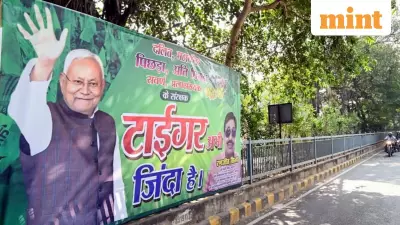
Wealth Takes Center Stage in Bihar's Electoral Battlefield
The recently concluded Bihar Assembly Election 2025 has revealed a striking trend about the role of financial power in Indian politics. According to election data analyzed on November 14, 2025, approximately 42 per cent of the 2,600 contesting candidates reported assets exceeding Rs 1 crore, highlighting the significant presence of wealthy individuals in the political arena.
The Crorepati Candidate Phenomenon
This substantial percentage of crorepati candidates underscores a growing pattern in Indian elections where financial resources appear to play a crucial role in electoral politics. The data suggests that nearly half of all candidates in the Bihar assembly elections belonged to the high-net-worth category, raising important questions about the accessibility of political participation for individuals from diverse economic backgrounds.
The election coverage, which included detailed constituency-wise results across multiple regions from Valmiki Nagar to Warsaliganj, provided comprehensive insights into how these wealthy candidates performed across different constituencies. The results have sparked discussions among political analysts about whether financial advantage translates directly into electoral success.
Constituency-Wide Impact and Voter Response
As the election results unfolded across Bihar's numerous constituencies, political observers closely monitored the performance patterns of these affluent candidates. The extensive list of constituencies where results were tracked demonstrates the widespread nature of this trend throughout the state.
From northern constituencies like Valmiki Nagar and Ramnagar to southern regions including Aurangabad and Gaya Town, the presence of wealthy candidates was evident across the political landscape. This distribution pattern indicates that the phenomenon of crorepati candidates is not confined to urban or developed regions but spans across rural and urban constituencies alike.
The election outcome data, compiled and published on November 14, 2025, at 13:07 IST, provides a crucial foundation for understanding the evolving dynamics of money and politics in one of India's most politically significant states. As political parties and analysts continue to dissect the results, the performance of these financially well-equipped candidates remains a focal point of discussion.
Broader Implications for Democratic Processes
This significant representation of wealthy candidates in the Bihar Assembly Election 2025 raises important questions about equal opportunity in political participation and the potential influence of financial resources on electoral outcomes. The data prompts examination of whether money power is becoming an increasingly important factor in determining election results.
Political experts are now analyzing whether candidates with substantial financial backing had any distinct advantage in terms of campaign resources, visibility, and voter outreach compared to their less affluent counterparts. The final results across all constituencies will provide clearer evidence about the actual correlation between wealth and electoral success.
As democracy continues to evolve in India, the patterns observed in the Bihar Assembly Election 2025 may have lasting implications for how political campaigns are conducted and funded in future elections, not just in Bihar but across the country.





